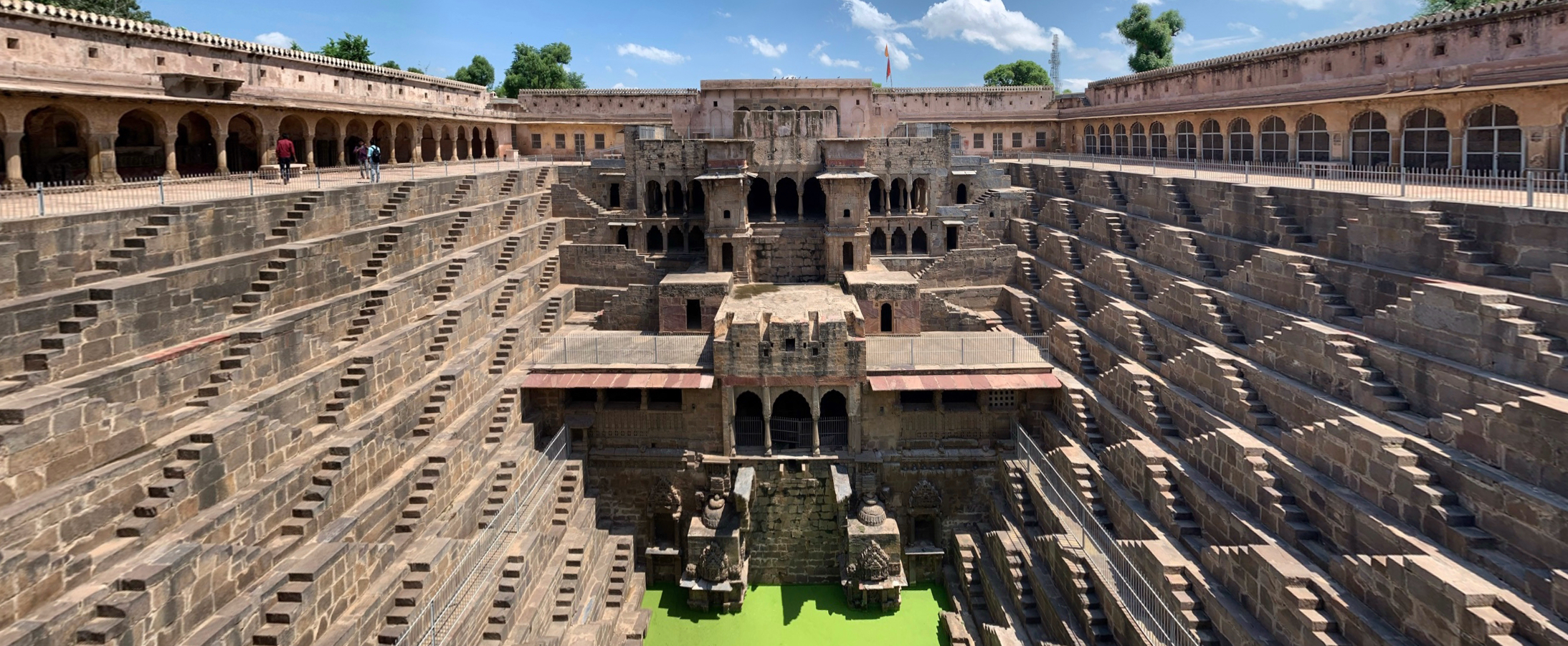Chand Baori stands as a magnificent testament to the architectural brilliance of medieval Rajasthan, revealing the ingenious water management techniques of an era defined by scarcity and innovation. Constructed during the 8th-9th century by the Nikumbha dynasty, this extraordinary stepwell represents far more than a mere water collection mechanism—it embodies a complex narrative of social, cultural, and engineering prowess.
The stepwell's design is a breathtaking architectural achievement, featuring an inverted pyramid structure with 3500 meticulously crafted narrow steps descending 13 stories into a massive underground water reservoir. Its geometric precision and symmetrical pattern create a mesmerizing visual experience, with each step carefully positioned to maximize water collection and provide cooling in the intense desert environment.
Historical evidence suggests the stepwell was commissioned by Raja Chanda, a ruler of the Nikumbha dynasty, during a period of significant water management challenges. The site was not merely functional but also served as a critical social space where community members would gather, exchange information, and seek respite from the scorching Rajasthani heat. The temperature at the bottom of the stepwell remains several degrees cooler than the surface, making it an essential refuge for travelers and locals alike.
Adjacent to the stepwell lies the Harshat Mata Temple, which adds another layer of cultural significance to the site. Though partially destroyed during historical invasions, the temple complex reinforces the spiritual and communal importance of the area. The nearby sculptures and architectural remnants provide glimpses into the rich mythology and artistic traditions of medieval Rajasthan.
Local legends surrounding Chand Baori add an element of mystique to its already fascinating history. One intriguing tale suggests the stepwell was constructed by supernatural entities—ghosts and demons—in a single night, highlighting the local folkloric imagination and the sense of wonder inspired by such monumental structures. While mythical, these stories underscore the stepwell's profound impact on the collective cultural consciousness.
The architectural complexity of Chand Baori extends beyond its water management function. The diamond-setting geometry on three sides and the pillared corridors on the fourth demonstrate an extraordinary understanding of structural engineering and aesthetic design. Researchers and architects continue to study the construction techniques, materials, and spatial configurations that made such an intricate structure possible during the 8th-9th centuries.
Archaeological evidence and ongoing research reveal that Chand Baori was not just a practical infrastructure but a multifaceted cultural artifact. The carved sculptures depicting scenes from Indian mythology, the intricate step designs, and the overall spatial organization reflect the sophisticated artistic and engineering capabilities of the period. It serves as a living museum, offering insights into the social, technological, and spiritual dimensions of medieval Rajasthani civilization.
Today, Chand Baori is recognized as a national heritage site, carefully maintained by the Archaeological Survey of India. Its preservation and ongoing restoration efforts highlight its significance as a critical piece of India's architectural and cultural legacy. The site continues to attract scholars, tourists, and cultural enthusiasts from around the world, serving as a powerful reminder of the extraordinary achievements of ancient Indian civilization.






